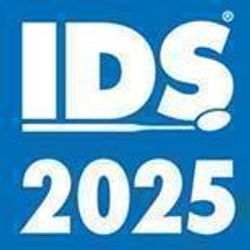- About Us
- Advertise
- Editorial
- Contact Us
- Terms and Conditions
- Privacy Policy
- Do Not Sell My Personal Information
© 2025 MJH Life Sciences™ and Dental Products Report. All rights reserved.
The Pros and Cons of 5 Implant Attachment Styles
A look at the benefits and drawbacks of different approaches to implant attachments.
Implant-supported overdentures are a life-changing option for many fully or partially edentulous patients. Attaching dentures to an osseointegrated dental implant enhances stability for the restoration, which allows for better function and increased confidence that the dentures will stay where they’re supposed to whether the wearer is talking, chewing, or doing anything else.
When it comes to affixing the dentures to implants, there are numerous approaches to choose from. The clinical situation and the patient’s anatomy inform the choice, but an in-depth knowledge of attachments allows the technician to select the best option for the case at hand and design the restoration to meet the case’s functional and esthetic requirements.
With this in mind, here are some pros and cons for 5 different styles of attachment.
Telescopic Screw Retention
The “most-fixed” type of fixed removable, this involves designing a restoration that will be attached directly to implant abutments with screws.
Pros:
- Creates a secure connection and provides optimal restoration stability
- Can be used without a bar or metal substructure
Cons:
- Restoration cannot be removed by the patient
- Screw access channels can create esthetic or structural challenges
Ball Attachment
These attachments are versatile and feature a male ball usually attached to an implant bar or directly to implant abutments. The restoration locks onto the balls with integrated o-ring female attachments.
Pros:
- Numerous design options exist for the location and orientation of the attachments
- Easy for patients to remove and replace the appliance
Cons:
- Requires enough space for the ball to be fully above the gingiva
- Retention o-rings or other devices wear out over time and must be replaced
LOCATOR-style Attachment
Similar to a ball attachment, these features a low-profile, cylindrical male component and a cap style female that clips the restoration to the attachments.
Pros:
- Easy for patients to insert and remove restorations
- Attachments can support angulated connections from nonparallel implants
- Low profile makes it easier to use when vertical space is limited
Cons:
- As they allow some movement, they cannot be used when a rigid restoration is required
- Connectors wear out over time and must be replaced
Bar Clip Attachment
This attachment style features an implant bar that is affixed to the implants with screws, and then the dentures contain a channel that fits around the bar with plastic or metal clips in the channel to provide retention
Pros:
- Provides good stability and retention
- Bar does not need to be integrated into the dentures themselves, making replacement easier
Cons:
- Bar must be designed to accommodate clips
- Requires more precision in design and fabrication
Magnetic Attachment
These attachments feature magnets that are attached to the implant abutment or screw-retained bar, as well as corresponding magnets that are attached to the denture.
Pros:
- Easy to insert and remove the appliance
- Can be used with non-parallel implants
- Low profile for when vertical space is limited
Cons:
- Retention is often weaker than other attachments
- Magnets can corrode or lose strength over time.

 Download Issue: Dental Products Report November 2022
Download Issue: Dental Products Report November 2022

